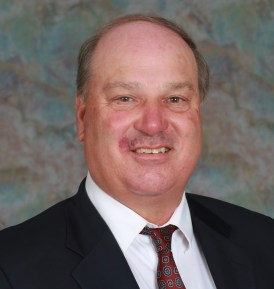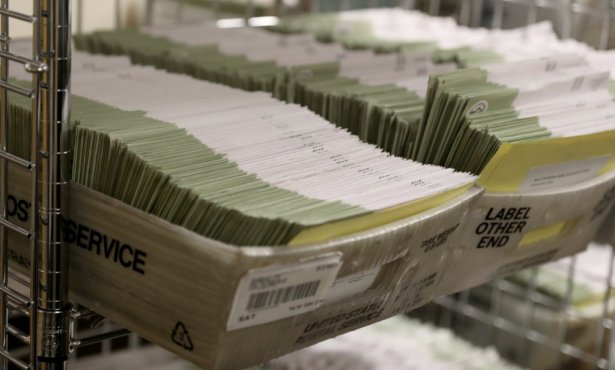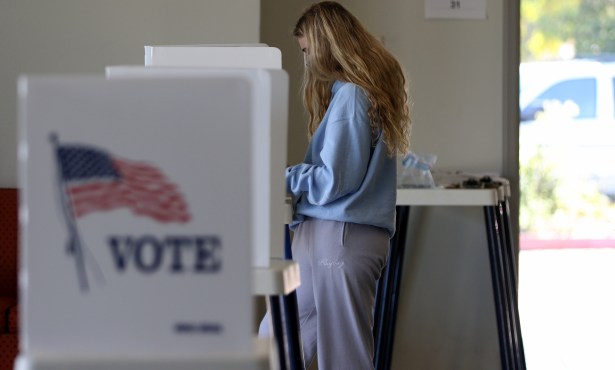School Board Candidate Greg Hammel Looks to Level the Playing Field at Goleta Union
Engineer, Father of Three, and Youth Sports Coach Explains Why He’s Running in Six-Way Race
This interview is part of an ongoing series of candidate profiles ahead of the General Election on November 3, 2020. Stay tuned to our Election 2020 page for all of our latest profiles and election coverage.
Join the Santa Barbara Independent for a discussion with the Goleta Union School District Board of Education candidates on Wednesday, September 30, at 5:15 p.m. live on Zoom. Register at independent.com/forum.
Engineer and father of three Greg Hammel is running for the Goleta Union school board after 20 years of volunteer involvement in the district.

Hammel’s eldest son is 31, and his youngest son is 16 in the Santa Barbara Unified School District. All three of his sons went through Goleta Union, giving Hammel a parent perspective that has spanned several decades. In addition, he has coached youth sports and as a result has come to know children from other families that further motivated him to run.
Leveling the education playing field and raising standardized test scores is the biggest issue for Hammel, which he said bothered him for years before he announced his candidacy to try and make a dent in the issue.
The Independent sat down with Hammel to discuss his campaign and some of his top issues. The following is a condensed version of the conversation.
What inspired you to join the six-way race?
I noticed when I was helping in the classrooms and I was coaching noontime leagues that we had a two-tiered education system. We had kids with parents who had middle-class means and then you had a tier of kids in poverty…. Goleta Mountain View is probably our richest school. They score 80th percentile; those kids do fine. But I was in Isla Vista and La Patera, and kids from low-income homes, they’re left behind. Totally left behind.
When I was working with a teacher, she had a whiteboard with all the kids’ names, and when they did their homework — the 3rd grade — she’d check them off or give them a star. And half the kids had no homework done for three weeks. I asked, “What’s going on?” She goes, “Well, they go home, and there’s no resources. There’s no Wi-Fi. There’s three kids living in a living room. Their parents aren’t home.” So they go home and the teachers don’t expect the homework to get done just because of economics. That’s always been in the back of my mind. This has been going on for 20 years.
… I want to make sure you know that it’s socioeconomic; it’s not racial. I had a friend who was homeless, and he had two kids, and I’d let him live in my house sometimes. And the rest of the time he’d live in a van, and his kids — this was about 20 years ago — his kids were really hurt because they couldn’t do their homework in a van. It’s socioeconomic…. We can’t have a two-tiered system because, you know, that’s not America to me, that’s not, I don’t feel comfortable paying taxes and then having, like, two classes, and they all live within a couple of miles of each other, you know?
Get the top stories in your inbox by signing up for our daily newsletter, Indy Today.
Do you know how the two-tier issue can be solved?
We have to tailor what works to the school. What I’m thinking is, first we need to talk to the Hispanic community and the low-income community. You have to get their buy-in. We need buy-in to sign kids up to stay after school and do homework, like a homework club. Or we give them prizes for doing their homework; I’m just throwing ideas out there. We could provide tutors, maybe from UCSB as a school of education. They’re right next door; they could come right to Isla Vista or La Patera and then those tutors could use it for getting degrees in education. I also think we need to get kids in groups of four, five, or three so they can learn, kind of like Casie [Killgore, principal of Franklin Elementary] did.
… I was helping teachers, and when you have 30 kids in a class, a lot of kids, they don’t speak up. And you can’t help everyone, because there’s one teacher. So you take the at-risk kids, put them in pods, and get funding — that’s the hard part…. Or my wife even said — her mother was in a retirement home — we could even get retired people, sixties or seventies, to just read to the kids.
You’ve spoken at several Santa Barbara Unified board meetings against Just Communities, the nonprofit that contracted with the district to provide anti-bias training. Could you explain that briefly?
When [the district contract with Just Communities] started this 10 years ago, one of their selling points — they spent hundreds of thousands of dollars — was that if we socialize and help the Hispanics and the Blacks, their esteem will improve, and so they’ll score better, and you’ll see results in school. We haven’t seen that. And I’ve seen the curriculum, and it doesn’t do what it said it was going to do. So at some point, you have to reevaluate and say, “Hey, we sold this, saying that it was going to raise scores. It hasn’t raised their scores. Yeah. Let’s not just keep funding. Let’s reevaluate it.” And that’s all I’ve been trying to ask the school.
If you were elected to the board, how would you vote when it comes to reopening schools for in-person instruction?
I would open on our county data, not on California data. And if you look at our county, no kids have died. No kids have been hospitalized in the six months. And about 6 or 7 percent of the cases are from kids 20 years and under, and they make up a quarter of the population. So that tells you, something in the kids keeps them safe. I don’t understand how the virus works, but they’re not the population at risk. They’re actually five times less likely to get it than a normal adult. And if they get it, they don’t get sick; they don’t get hospitalized. I would like to sit around a table with everyone in the district and say, let’s put … all the facts on the table now: Is it safe to open? Or when you close, then you have kids at home … not learning as well.
I’ll tell you my son is trying to get his friend out because the funny thing about going to school is that most of these kids would either walk or bike. Now they’re not doing that. [My son’s friend] used to ride his bike to school with my son, and now he’s at home and he’s depressed. I kick my son out of the house because he’ll type all day long with his friends. So I say, “Go ride.” We kind of bike as a family. Because he used to ride to school every day so we make sure he still does…. By closing the school, you’re really creating stress at home. I’m not saying I’d open, but I’d like to put it on the table.
Every day, the staff of the Santa Barbara Independent works hard to sort out truth from rumor and keep you informed of what’s happening across the entire Santa Barbara community. Now there’s a way to directly enable these efforts. Support the Independent by making a direct contribution or with a subscription to Indy+.




You must be logged in to post a comment.